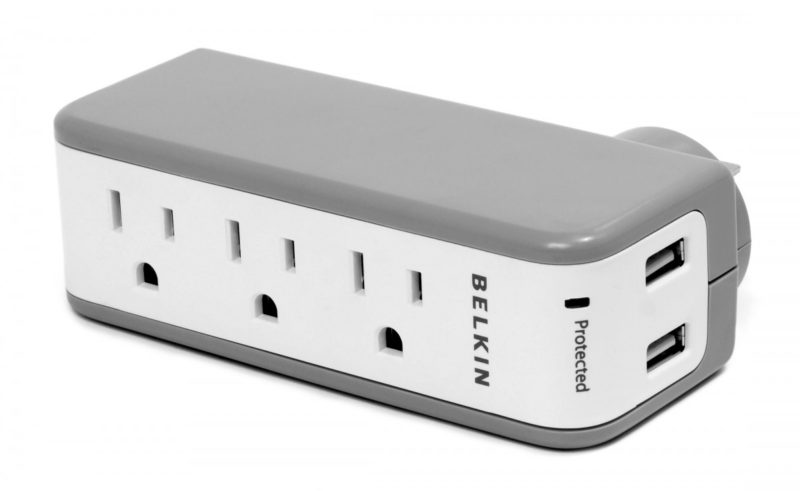Do you think about how do I surge protect my washer and dryer? Stop thinking further; this is the right place for you to know about surge protection. You can use the top-level surge protector to make your washer and dryer always work correctly for surge protection.
There are a few top-rated surge protectors that are highly recommended by experts. You’ll need a good washer and dryer surge protector to safeguard the washer from overvoltage occurrences and electrical surges.
A defective surge protector may simply sit there, deluding you into thinking you’re safe. The washer and dryer will be ruined whenever something truly happens, so it’s better to use the top-level surge protector. You should keep reading to learn more about the surge protector.
What Does Surge Protector Do?
A surge protector serves two purposes. It seems to have a lot of power outlets. As a result, you could power multiple devices from a single outlet. A surge protector also protects the electronics from high-voltage power surges. Whenever the voltage in the socket rises, this is known as a power surge or spiking. In basic terms, once the amount of electricity flowing through the outlet or wire exceeds the capacity of the outlet or wire. However, you should be aware of several difficulties with these channels. When there are a lot of gadgets connected to the socket, that is. And the power is running out. Excess energy is redirected to the ground wire by the surge protector.
Things To Do To Surge Protect My Washer And Dryer?
Surge protectors seem to be available in a variety of configurations. It varies depending on the type of device and the level of volts this could handle. Surge protectors appear to come in a wide range of specifications. The amount of volts a gadget can tolerate varies depending on the nature of the equipment. The below mentioned are some things to consider while purchasing a surge protector, and by reading this, you will understand how do I surge protect my washer and dryer. You may also be interested to know about the five main power problem.
#1. Rating for safety
Safety has become one of the two essential functions of a surge protector. On the other hand, Surge protectors are made by various companies. So, which is the most suitable for washers and dryers? While purchasing a surge protector, keep the following in mind. Check for UL certifications. The Underwriters Laboratories is an acronym for UL. A United States federal agency has given UL approval to carry safety checks. Replace it immediately when you observe anything comparable to an extension cable producing sounds. The surge protector is recommended for washers and dryers that meet UL 1448 security requirements. Surge protectors for washers and dryers should use UL 1448.
#2. Number of sockets
Even if you don’t require many connections, this can be useful on occasion. Assume you wish to connect the washer and dryer to the same electrical outlet. So a surge protector with numerous ports could come in handy. Technically, users can utilize a single surge protector and a multiplug simultaneously. However, it will be more expensive and require more space. A twisted wire bundle is sometimes aggravating.
Single-socket surge suppressors are available. However, there are many more than five or more sockets. However, make sure the sockets are the right size before you start. Real, multiplug, or surge protectors may appear to be identical. You should be aware that almost all surge protectors may function as multiplugs. Surge protectors aren’t always included in multiplugs. When purchasing a surge protector, consider how many sockets you require.
#3. Its highest voltage capacity
It’s crucial to know how much electricity a surge protector can tolerate. Surge protectors come in a variety of shapes and sizes. And they can all survive various forms of surges. Clamping voltages seem to be another name for it. The clamping voltage appears to be the peak value allowed to flow through the protector. Before the protection is activated, the device does not consume excessive power. Examine the voltage that the washer and dryer use. As a result, choose a surge protector that does not allow more power than the system can handle. Its clamping power should be less than 750 Volts in general. This is for surge protectors for washers and dryers.
#4. The product warranty
It’s simple to discuss the warranty—the much more comprehensive the contract, the more remarkable. Whenever purchasing devices, we all should keep an eye out for guarantees. Items may break down at the end of the day. Nothing lasts indefinitely. However, if the product is still under warranty, customers would be offered a free substitute. Alternatively, the vendor will repair it for free. However, please remember the surge protector’s reliability. Reputable producers usually offer extended warranty coverage. They do so because they believe in their goods. They’d be losing money if they didn’t, right?
It’s A Wrap!
We are glad to know that you have learned how do I surge protect my washer and dryer. This is the most critical question everyone is thinking about, so understanding the best surge protector helps you when you buy it. But make sure to consider such things mentioned above about the surge protector. You may also want to read about how to disconnect washer and dryer and how to do laundry without a washer and dryer. Thank you, friends, for staying with us.

